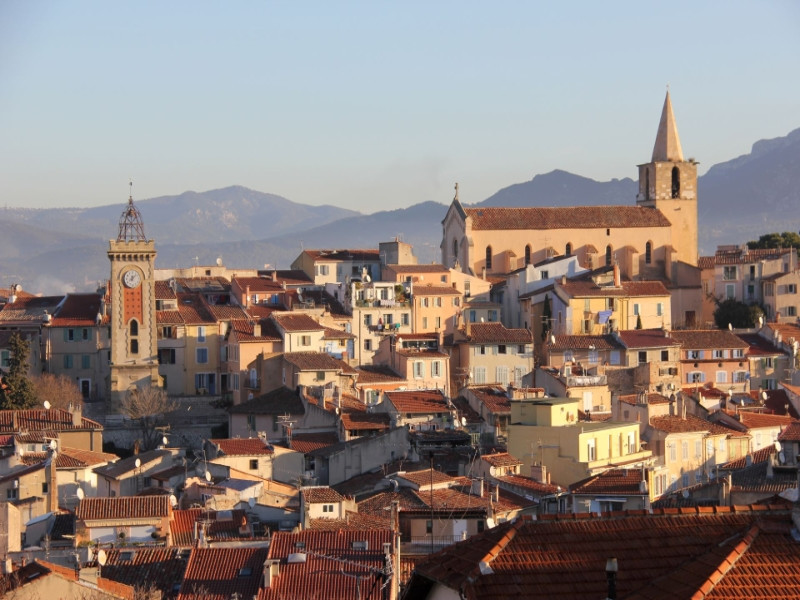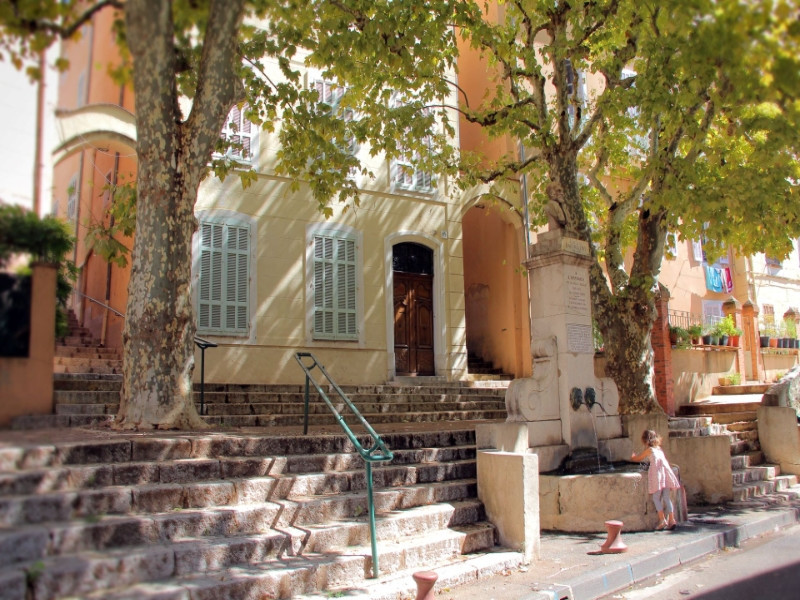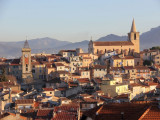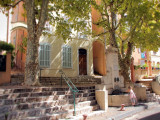Historic center of Aubagne
Historic site and monumentPresentation
Aubagne comes from the Latin Albanea, which means "the white one". The bright color of the limestone of the hills surrounding the city would have inspired this name, but it also evokes the white poplars that once followed the course of the Huveaune.
To see:
- Marcel Pagnol's native house (1895 - 1974) - 16 cours Barthélemy
- The Jean Marie de Bruxelles hotel - 16 rue de la République. A building built according to the "Ordre Nouveau" created by Pierre Puget in Marseille around 1670 on the Cours Belsunce.
- The bread oven - Rue Torte. Baker's oven built at the end of the 18th century, in cinerite, a rock of volcanic origin (Alpes-Maritimes). Headquarters of the Association Les amis du Vieil Aubagne.
- The Town Hall - boulevard Jean Jaurès. Installed in this building in 1828. Facade restored in 1933 in the Art Deco style.
- The old Halles - boulevard Jean Jaurès. Former hospice, it was demolished in 1908 to make room for the covered market of the city and the justice of peace. Decorated with enamelled tiles by the Bocca brothers in the Art Nouveau style (currently the town hall).
- The triangular bell tower - Place de l'Observance. Former Observantine convent (17th century) of which only a chapel converted into a church and the bell tower (1623) remain today.
- Les Halles: covered market intended for the sale of meat and then fish (which gave it the name of Halle de la Poissonnerie). The current building was rebuilt in stone of the Crown in 1686. Mosaics of the Vaglini brothers.
- The clock (1900) - rue Christine. Building and public garden built on the site of several blocks of houses and the city walls. The old clock was installed on a tower of these ramparts at the entrance of the current garden.
- Place de Guin: house of the XVIIIth century of the type "Three windows of Marseilles". Fountain of Dr Jean-Louis Barthélémy (1810-1890) built in 1897 to honor the memory of the historian of Aubagne.
- Cour de Clastre: garden of the presbytery and from 1600 to 1778 former cemetery of Aubagne.
- The chapel of the White Penitents - chemin de la planque. Brotherhood created in 1624. Chapel built in 1772 in a baroque style. Statues of Saint Peter on the left and Saint Paul on the right. Listed as a historical monument.
- The chapel of the Pénitents Noirs - Chemin St Michel. Old chapel of St-Michel built around the IXth century, given to the brotherhood of the penitents in 1551. Current neoclassical facade dating from 1785. Listed as a historical monument.
- The parish church of St-Sauveur: built in the 11th century, the present aspect of the church dates from 1608 and the façade was restored in cement in 1900. Inside, you can admire a Virgin and Child and the main altar of Pierre Puget's workshop (17th century) as well as a beautiful 18th century organ.
- The Gachiou gate: main gate of the ramparts built in 1363.
- The Lion fountain: square created in 1864 to aerate the urban fabric.
- The Hôtel de Bausset - rue Laget. Windows with Provençal Renaissance decoration (stylized flowers, cherubs, pearls and shells), sculpted around 1525.
- The Cours Foch, built on the former bed of the Huveaune, diverted in 1838. Today, it is the place of all the festivities and the most famous of the city. In the center, the Monument aux morts sculpted by Henri Reybaud in 1923. Listed as a historical monument.
- Marcel Pagnol's native house (1895 - 1974) - 16 cours Barthélemy
- The Jean Marie de Bruxelles hotel - 16 rue de la République. A building built according to the "Ordre Nouveau" created by Pierre Puget in Marseille around 1670 on the Cours Belsunce.
- The bread oven - Rue Torte. Baker's oven built at the end of the 18th century, in cinerite, a rock of volcanic origin (Alpes-Maritimes). Headquarters of the Association Les amis du Vieil Aubagne.
- The Town Hall - boulevard Jean Jaurès. Installed in this building in 1828. Facade restored in 1933 in the Art Deco style.
- The old Halles - boulevard Jean Jaurès. Former hospice, it was demolished in 1908 to make room for the covered market of the city and the justice of peace. Decorated with enamelled tiles by the Bocca brothers in the Art Nouveau style (currently the town hall).
- The triangular bell tower - Place de l'Observance. Former Observantine convent (17th century) of which only a chapel converted into a church and the bell tower (1623) remain today.
- Les Halles: covered market intended for the sale of meat and then fish (which gave it the name of Halle de la Poissonnerie). The current building was rebuilt in stone of the Crown in 1686. Mosaics of the Vaglini brothers.
- The clock (1900) - rue Christine. Building and public garden built on the site of several blocks of houses and the city walls. The old clock was installed on a tower of these ramparts at the entrance of the current garden.
- Place de Guin: house of the XVIIIth century of the type "Three windows of Marseilles". Fountain of Dr Jean-Louis Barthélémy (1810-1890) built in 1897 to honor the memory of the historian of Aubagne.
- Cour de Clastre: garden of the presbytery and from 1600 to 1778 former cemetery of Aubagne.
- The chapel of the White Penitents - chemin de la planque. Brotherhood created in 1624. Chapel built in 1772 in a baroque style. Statues of Saint Peter on the left and Saint Paul on the right. Listed as a historical monument.
- The chapel of the Pénitents Noirs - Chemin St Michel. Old chapel of St-Michel built around the IXth century, given to the brotherhood of the penitents in 1551. Current neoclassical facade dating from 1785. Listed as a historical monument.
- The parish church of St-Sauveur: built in the 11th century, the present aspect of the church dates from 1608 and the façade was restored in cement in 1900. Inside, you can admire a Virgin and Child and the main altar of Pierre Puget's workshop (17th century) as well as a beautiful 18th century organ.
- The Gachiou gate: main gate of the ramparts built in 1363.
- The Lion fountain: square created in 1864 to aerate the urban fabric.
- The Hôtel de Bausset - rue Laget. Windows with Provençal Renaissance decoration (stylized flowers, cherubs, pearls and shells), sculpted around 1525.
- The Cours Foch, built on the former bed of the Huveaune, diverted in 1838. Today, it is the place of all the festivities and the most famous of the city. In the center, the Monument aux morts sculpted by Henri Reybaud in 1923. Listed as a historical monument.
Accessible for disabled
General information
- Environments :
- In centre of town
- Town location
Services, Tours, Activities and entertainment
- Historical patrimony :
- Historic patrimony
- Historic district
Contact
Historic center of Aubagne
13400
Aubagne
Phone : +33 4 42 03 49 98

Destination
Centre historique d'Aubagne
13400
Aubagne
GPS coordinates
Latitude : 43.292857
Longitude : 5.569307






